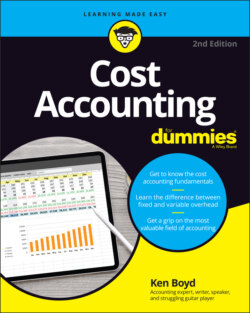Читать книгу Cost Accounting For Dummies - Kenneth W. Boyd - Страница 49
Pushing equipment too hard and relevant range
ОглавлениеRelevant range is the area in which a set of assumptions about your costs hold true. By area, I mean a minimum and maximum level of use of an asset. As long as your use of the asset stays in that range, the cost assumptions apply. If you use the asset too much (out of the relevant range), it eventually breaks down. Breakdowns occur when you try to operate beyond your asset’s maximum capacity.
The bottom of a range is the minimum. For this book, you focus on the maximum.
At this point, you need to know about assets. An asset is anything you use to make money in your business (anything that provides your company with some benefit in the future). Essentially, you use up assets to make money.
An asset may be a tangible asset — a factory, a vehicle, or a piece of equipment. An asset can be intangible, such as a brand name or a patent. For example, the brand names Coca-Cola, McDonald’s, and Nike are assets. Those names drive business to those companies.
Assume you’re a plumber. You have a truck that you use to carry equipment to homes to work on plumbing. The truck is an asset. As you drive the truck, two things happen. First, you’re doing plumbing work and making money. At the same time, the value of the asset is declining. The decline in value of a tangible asset is called depreciation.
Now, here’s where relevant range comes in. There’s a limit to how much you can use the asset. The truck can be driven only so many miles before it needs maintenance or a repair.
Say you’re planning your plumbing business for the month. Based on your experience, you know that your truck needs maintenance every 4,000 miles. The maintenance means the truck can’t be used for one day.
Because you perform plumbing work seven days a week, the day maintenance is performed on a day when you don’t earn revenue. The relevant range for your truck is up to 4,000 miles. Beyond that point, you need to take it out of service for a day. To work seven days a week, you may need to have another truck — another asset.
There’s relevant range for many assets. Maybe you can run your sewing machines for 10,000 hours before they need repairs. You might find that your commercial printing press has a maximum number of print jobs it can perform without breaking down. If you need production capacity above the relevant range, you need to invest in another asset. That investment is a cost.
Relevant range isn’t just about breakdowns and maintenance. Even if your machinery works as expected, there’s only so much capacity you can handle. Say you have machine capacity to produce 1,000,000 gloves a year. If you want to increase production to 1,200,000 gloves, you need more machines. That means an investment in more fixed assets.
